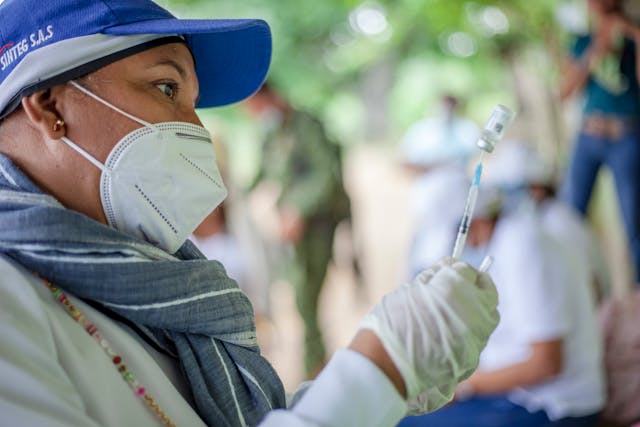Amidst vaccine shortages, many younger residents in New York City obtained COVID-19 vaccinations earlier than planned, especially in wealthier neighbourhoods, reveals a Columbia University Mailman School of Public Health study. In contrast, lower-income regions with a higher proportion of elderly residents showed less vaccination coverage during the initial three months of the rollout. They experienced more excellent mortality rates over the year. These findings have been published in the Journal of Urban Health.
An adjunct population and family health professor at Columbia Mailman School, Nina Schwalbe, emphasised that a vaccine strategy prioritising those most at risk from COVID-19 complications and deaths would have been more effective. She highlighted the necessity for policymakers to tailor vaccine distribution strategies to the local demographics of high-risk groups. Schwalbe suggested that focusing the limited vaccine supply on lower-income areas with a significant elderly population could have reduced overall mortality.
The study detailed the vaccination schedule and the sequence in which different groups were vaccinated. Starting on December 14, 2020, New York began vaccinating high-risk hospital workers, followed by successive age groups until all adults aged 30 and over were eligible by March 30, 2021. Vaccines were administered through fixed-point mass vaccination sites in collaboration between the New York State Department of Health and the New York City Department of Health and Mental Hygiene.
Researchers utilised data from the Census Bureau and New York City Health, aggregated by modified zip code tabulation areas (MODZCTA), which included demographic information on race, income, and age. They analysed COVID-19 mortality rates per 100,000 population in each MODZCTA from December 1, 2020, to December 31, 2021.
Schwalbe pointed out that in New York, the risk of dying from COVID-19 varied significantly, with age being the most significant risk factor and low-income households being disproportionately affected. By the end of March, vaccination rates for individuals aged 65 and above ranged from 53 per cent in the poorest quintile to 75 per cent in the richest, with the highest coverage reaching 99 per cent in the wealthiest areas compared to 68 per cent in the most inadequate. A year later, when vaccines became widely available, the median vaccination coverage for residents aged 65 and older surpassed 87 per cent, even in the least wealthy areas.
The study questioned whether New York expanded vaccination eligibility too rapidly, given the vaccine shortages, rather than prioritising higher-risk groups, such as older residents in low-income areas. Schwalbe noted that while it’s possible some younger individuals were vaccinated due to their professions or underlying health conditions, these factors likely did not justify the significant disparity in vaccination rates between low and high-income areas.
Schwalbe and her colleagues concluded that the distribution of vaccines in the face of shortages showed an apparent “misallocation” that could have been addressed more effectively by adhering strictly to state guidelines on distribution criteria. They argued for a targeted approach in U.S. policy, prioritising access to critical resources like vaccines for those most at risk of severe health outcomes, thereby enhancing the efficiency and equity of public health interventions.
More information: Nina Schwalbe et al, Assessing New York City’s COVID-19 Vaccine Rollout Strategy: A Case for Risk-Informed Distribution, Journal of Urban Health. DOI: 10.1007/s11524-024-00853-z
Journal information: Journal of Urban Health Provided by Columbia University Mailman School of Public Health








